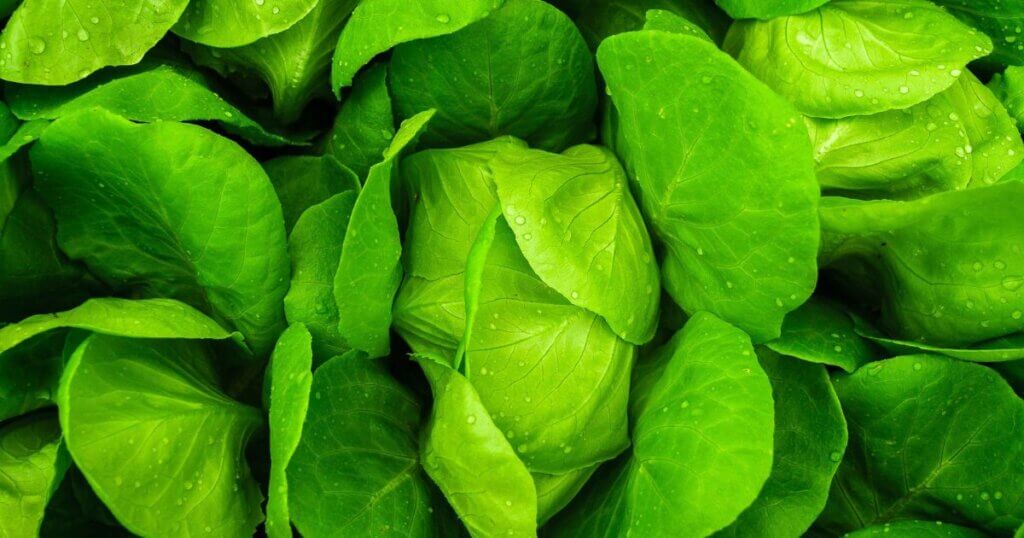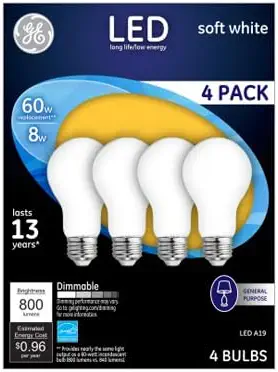Growing Fresh Salad Greens Indoors

Some of the links in this post are affiliate links. As an Amazon Associate, we earn a referral fee from qualifying purchases—at no extra cost to you.
Growing your own salad greens indoors can be a rewarding and convenient way to ensure a fresh supply of nutritious greens throughout the year. Whether you have limited outdoor space, want to avoid pesticides, or enjoy the satisfaction of growing your food, this guide will provide you with all the information you need to cultivate a vibrant indoor salad garden successfully. From selecting the right varieties to optimizing growing conditions, we’ll cover everything you need to know to become a salad greens aficionado.
Table of Contents
Why Grow Salad Greens Indoors?
Indoor gardening has gained popularity in recent years and for a good reason. Growing salad greens indoors offers several advantages over traditional outdoor gardening:
- Year-round availability: By growing salad greens indoors, you can enjoy a fresh harvest regardless of the season. No longer will you be limited to store-bought produce during the colder months.
- Controlled environment: Indoor gardening allows you to control the growing conditions, ensuring optimal growth and minimizing the risk of pests and diseases. You can tailor the environment to suit the specific needs of salad greens, such as temperature, humidity, and lighting.
- Convenience: Having a salad garden right in your home means you can easily pluck fresh greens whenever needed—no more last-minute trips to the grocery store or worries about wilted lettuce.
Selecting the Right Salad Greens
Before you begin your indoor salad garden, choosing the right varieties that are well-suited for growing indoors is important. Not all greens thrive in limited space or controlled environments, so selecting the best options ensures a successful harvest. Some greens grow faster and require less maintenance, making them ideal for beginners and experienced gardeners alike. Here are some popular salad greens that thrive in indoor environments and provide fresh, flavorful ingredients for your meals.
1. Lettuce (Lactuca sativa)
Lettuce is a staple in any salad and comes in various types, including butterhead, romaine, and loose-leaf. These greens grow relatively quickly, making them an excellent choice for indoor cultivation, especially for those looking for a continuous harvest. Loose-leaf varieties, in particular, are perfect for small spaces as they don’t require much depth and can be harvested multiple times. With proper lighting and watering, lettuce can provide fresh, crisp leaves throughout the year.
2. Spinach (Spinacia oleracea)
Spinach is packed with nutrients and adds a delicious flavor to salads, making it a must-have for any indoor garden. It prefers cooler temperatures, making it a great choice for growing indoors, where climate control helps maintain optimal conditions. Spinach grows well in shallow containers and requires moderate sunlight or growth lights to thrive. Regular harvesting of young leaves encourages continuous production, ensuring a steady supply of tender greens.
3. Arugula (Eruca vesicaria subsp. sativa)
Arugula has a peppery taste that adds a unique kick to salads, elevating their flavor profile with a bit of spice. It grows quickly and thrives in indoor environments, making it an ideal choice for the indoor gardener who wants fast results. Arugula prefers well-draining soil and moderate moisture to prevent it from becoming too bitter. Regular trimming encourages regrowth, allowing for multiple harvests from a single planting.
4. Kale (Brassica oleracea var. sabellica)
Kale is a nutrient powerhouse that can be harvested leaf by leaf, allowing the plant to continue growing and producing new leaves. It’s a hardy green that can withstand varying indoor conditions, making it a great option for those who may not have precise climate control. Kale requires adequate light and occasional fertilization to maintain its rich nutrient content and robust growth. With proper care, it can provide fresh, vitamin-packed greens for months at a time.
Creating an Indoor Salad Garden
Now that you’ve selected your salad greens, let’s dive into setting up and maintaining your indoor garden.
1. Choosing the Right Containers
Selecting the right containers is crucial for successful indoor gardening. Consider the following factors when choosing containers for your salad greens:
- Size: Opt for containers deep enough to accommodate the root systems of your chosen greens. A depth of at least 6 inches is generally recommended.
- Drainage: Ensure that your containers have adequate drainage holes to prevent waterlogging, which can lead to root rot. Alternatively, use self-watering containers or add drainage materials at the bottom.
- Material: Containers made of plastic, ceramic, or fabric are commonly used for indoor gardening. Each material has advantages, so choose based on your preferences and the overall aesthetic you’re aiming for.
For easy and breathable container gardening, consider using grow bags like the Gardzen 3 Gallon Grow Bags. They offer excellent drainage, promote healthy root development, and are perfect for growing salad greens indoors in limited space.
2. Ideal Growing Conditions
Salad greens thrive in specific growing conditions. Providing the following factors will help ensure healthy growth:
- Light: Salad greens require adequate light to grow. Place your containers near a south-facing window where they can receive at least 6 to 8 hours of sunlight daily. You can supplement natural light with artificial grow lights if it is limited.
- Temperature: Most salad greens prefer cooler temperatures ranging from 60°F to 70°F (15°C to 21°C). Avoid placing your containers in areas with extreme temperature fluctuations, such as near heating vents or drafty windows.
- Humidity: Salad greens generally prefer higher humidity levels. You can increase humidity by placing a water tray near your plants or using a humidifier.
If your indoor space doesn’t get enough natural sunlight, a full-spectrum grow light like the GE BR30 LED Grow Light can help. It provides the right spectrum for leafy greens, promoting faster and healthier growth indoors.
3. Planting and Care
Now that you have your containers and ideal growing conditions, it’s time to plant your salad greens and provide proper care:
- Seeds or Seedlings: You can start your salad greens from seeds or purchase young seedlings from a local nursery or garden center. Follow the instructions on the seed packet or consult the nursery for transplanting guidelines.
- Soil and Fertilizer: Use a high-quality potting mix that is well-draining and rich in organic matter. Avoid heavy garden soil, as it may not provide the necessary aeration. Fertilize your plants with a balanced, water-soluble fertilizer according to the package instructions.
- Watering: Keep the soil consistently moist but not waterlogged. Check the moisture level regularly by inserting your finger into the soil. If it feels dry up to the first knuckle, it’s time to water. Avoid overhead watering to minimize the risk of disease.
- Pruning and Harvesting: As your salad greens grow, you may need to thin them out to provide enough space for each plant to thrive. Harvest the outer leaves as needed, allowing the inner leaves to grow. This practice promotes continuous growth and ensures a fresh supply of greens.
Choose a high-quality potting mix like FoxFarm Ocean Forest Potting Soil, which is rich in organic materials and provides the perfect environment for salad greens to thrive indoors.
4. Pest and Disease Management
While indoor gardens are less prone to pests and diseases, it’s still important to be vigilant. Here are some tips to keep common issues at bay:
- Inspect Regularly: Check your plants for signs of pests or disease. Early detection can help prevent widespread infestation.
- Natural Remedies: If you notice pests, such as aphids or spider mites, you can use natural remedies like insecticidal soap or neem oil to control them. These options are safe for edible crops.
- Good Air Circulation: Adequate air circulation helps prevent fungal diseases. Consider using a small fan to promote air movement around your indoor garden.
For natural pest control, consider using an organic option like Bonide Neem Oil. It’s safe for edible plants and effectively manages common indoor garden pests like aphids and spider mites.
5. Harvesting and Enjoying Your Salad Greens
Once your salad greens have reached maturity, it’s time to harvest and savor the fruits of your labor:
- Timing: Harvest your greens when they reach the desired size and texture. Different varieties may have other maturation times, so refer to the specific guidelines for each type.
- Leaf-by-Leaf Harvesting: Instead of uprooting the entire plant, practice leaf-by-leaf harvesting. This method allows the plant to grow and provides a continuous supply of fresh greens.
- Washing and Storage: Gently wash the leaves in cold water to remove any dirt or debris after harvesting. Pat them dry with a clean towel or use a salad spinner. Store the greens in the refrigerator in a sealed container or a plastic bag with a damp paper towel to maintain freshness.
After harvesting, rinse and dry your greens quickly with a tool like the OXO Good Grips Salad Spinner. It keeps your homegrown salad greens crisp and ready to serve.
Conclusion
Growing fresh salad greens indoors is a rewarding and sustainable way to enjoy a constant supply of nutritious greens throughout the year. You can create a thriving indoor salad garden by selecting the right varieties, providing optimal growing conditions, and implementing proper care. So, why wait? Start your indoor garden today and elevate your salads to a whole new level of freshness and flavor.
FAQs – Salad Greens
1. Can I grow salad greens indoors without direct sunlight?
Yes, you can! While salad greens thrive in direct sunlight, if natural light is limited, you can use artificial grow lights. LED grow lights are a great option for providing the necessary light spectrum for plant growth, ensuring your greens still thrive indoors.
2. How often should I water my indoor salad greens?
Indoor salad greens need consistent moisture, but the frequency of watering depends on factors such as container size, humidity, and temperature. Typically, you should water when the soil feels dry about an inch below the surface. However, avoid over-watering to prevent root rot.
3. How can I prevent my indoor salad greens from becoming too bitter?
Bitter-tasting salad greens, like arugula, can be a result of stress from inconsistent watering, too much heat, or insufficient light. To prevent bitterness, ensure your greens receive proper light, maintain a steady watering schedule, and keep the temperature within the recommended range.
4. Is it better to start salad greens from seeds or seedlings?
Both options can work well, but starting from seeds gives you more control over the growth process and can be more cost-effective. Seeds often sprout faster and grow better in indoor environments, but seedlings are a good choice if you’re short on time or prefer an easier start.
5. What should I do if I notice pests on my indoor salad greens?
If pests like aphids or spider mites appear, you can treat your plants with natural remedies such as insecticidal soap, neem oil, or a homemade solution of water and mild dish soap. Regularly inspect your plants to catch any issues early, and maintain good air circulation to reduce the chances of pests.
Other Useful Resources Related To Salad Greens
- The Spruce Eats – Guide to Salad Greens: A comprehensive guide to different types of salad greens, their flavors, and uses.
- Healthline – Nutritional Benefits of Leafy Greens: An article detailing the health benefits of incorporating leafy greens into your diet.
- Bon Appétit – Salad Recipes: A collection of creative and delicious salad recipes featuring various greens.
- Epicurious – How to Store Salad Greens: Tips and tricks for keeping your salad greens fresh for longer.
- The Simple Rule for Choosing the Best Greens for Your Salad: A guide to selecting the best salad greens based on flavor and seasonality.




